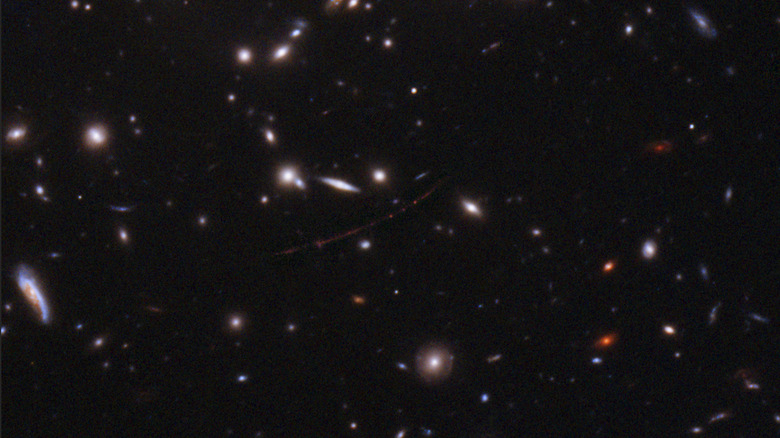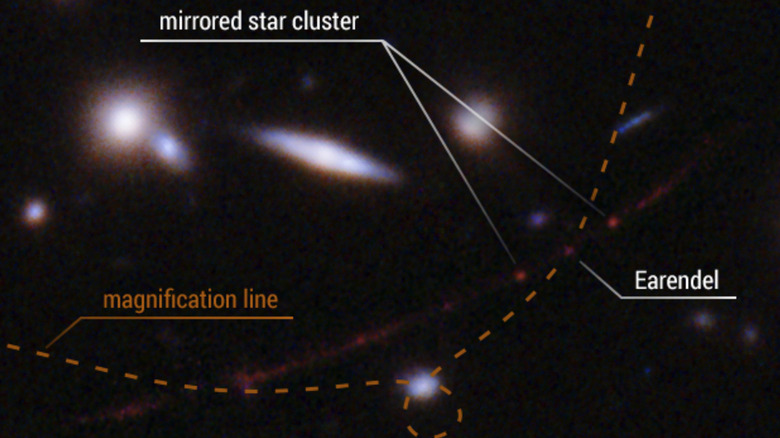The Farthest Star Was Just Discovered, Formed Nearly 13 Billion Years Ago
NASA has announced that the Hubble Space Telescope has captured an image of the farthest star ever discovered. Because Hubble is sensitive enough to detect light that has traveled through space for billions of years, it is able to see what the universe and objects in it looked like eons ago. In this instance, the telescope captured a star that existed as early as 900 million years after the universe-creating Big Bang; it was uncovered through a detailed analysis of images by astronomer Brian Welch and his team who had been examining the star's home called the Sunrise Arc galaxy.
Dubbed Earendel by Welch, which means "morning star" in Old English, the newly discovered star is some 12.9 billion years old. This means it has taken that long for the light we see today to reach us. The previous record-holder for the farthest star ever discovered, also spotted by Hubble, was the MACS J1149+2223 Lensed Star 1, situated around 9 billion light-years from Earth and formed around 4.4 billion years after the Big Bang. Stars have not always been made from exactly the same gaseous materials and typically come in one of three generations known as Population 1 (like our sun), Population 2, and Population 3.
Gravitational lensing
Population 2 and 3 stars date back to the oldest parts of the universe, giving us valuable clues and insights into what the early universe was like and the conditions that eventually led to suns like ours, as well as the formation of planets. Earendel, like many older stars, is supermassive; estimates put the celestial body at 50 times the mass of our sun and millions of times brighter. It is the explosions of early generation stars like Earendel that helped to create the heavier elements found in subsequent stars that eventually led to the formation of planets, according to National Geographic.
The light from Earendel was not observed by the Hubble telescope in a direct line of sight but rather through gravitational lensing. As Einstein had correctly predicted, massive objects distort the fabric of space-time. For astronomers, this means light passing around a star or galaxies can reveal objects situated further behind them.
In this instance, NASA says a huge galaxy cluster, WHL0137-08, is situated between Earth and Earendel. The galaxy cluster's warping effect serves as a natural magnifying glass that substantially amplifies the light from objects well beyond it. Thanks to chance, Earendel also happens to be situated close to a ripple in the fabric of space that acts as an additional lens, which Hubble was able to utilize to capture it.
Webb will pick up where Hubble left off
Before Hubble managed to detect Earendel, experts expected this sort of task would go to the James Webb Space Telescope, which is still undergoing testing before it becomes fully operational in the coming months. Webb is 100x more powerful than Hubble and plans are already in place for it to be trained on the part of space where Earendel is located.
Experts anticipate Webb will confirm that Earendel is either a star or a binary star system. The next-generation space telescope will also be able to accurately measure the star's brightness and temperature, helping experts determine whether it is indeed one of the primordial stars made from only hydrogen and helium, which is still only theorized at this point. Webb will also be used to search for more celestial jewels like Earendel.

